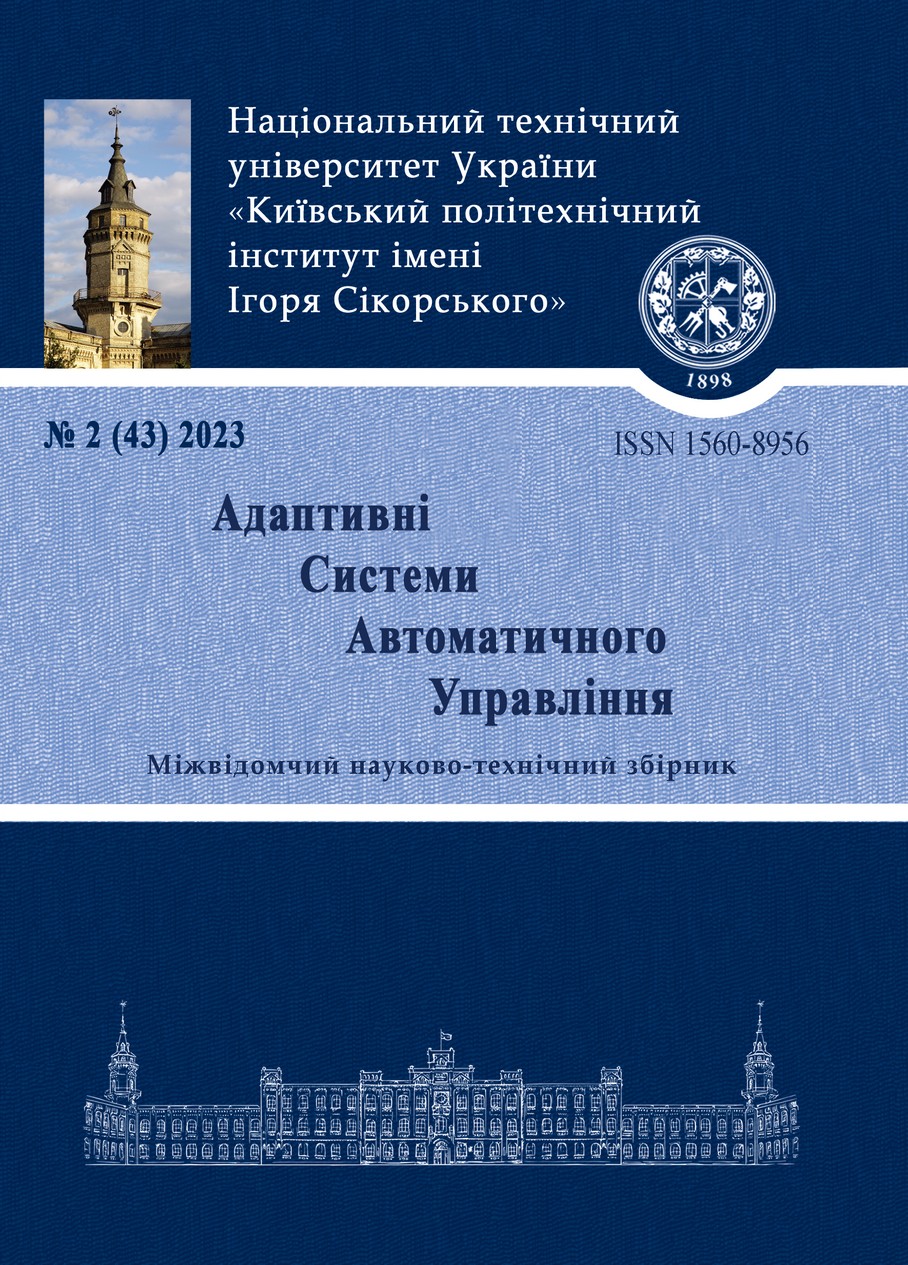Вирішення проблема комунікації в умовах втрати зв'язку до Azure IoT Hub
DOI:
https://doi.org/10.20535/1560-8956.43.2023.292246Ключові слова:
дрони, рій, Azure IoT Hub, LoRaWANАнотація
Об'єктом дослідження є процес передачі інформації між учасниками рою дронів що розширити зону покриття керуючим сигналом, та забезпечити гарантовану передачу інформації що дозволяє зберігати контроль над роєм дронів та безпечно керувати ним. Метою роботи є забезпечення гарантованої передачі інформації на відстань від 5
до 10 км. в залежності від технічних можливостей та створення каналу комунікації між членами рою у умовах відсутності зв'язку з хабом. Використавши польотний контролер Pixhawk та інтеграційний модуль передачі прийому даних з підтримкою низько частотного протоколу LoRaWAN вдалося забезпечити надійний контроль у мовах втрати зв'язку з керуючим хабом. Також було визначено логіку присвоєння ролі комунікатора між керуючим хабом та членами рою для збільшення зони покриття керуючого сигналу.
Бібл. 13, рис. 5
Посилання
Akhaladze I.E. Increasing the efficiency of streaming video processing using serverless technologies // Adaptive automatic control systems. 2021. No. 39. C.32-40 https://doi.org/10.20535/1560-8956.39.2021.247393
Akhaladze I.E. The use of serverless functions in the algorithm for calculating the target point of the trajectory under dynamic load. 2022. No 40. C.34-38 https://doi.org/10.20535/1560-8956.40.2022.261531
Akhaladze A.E. Using IoT to synchronize flight trajectories of drones // Adaptive automatic control systems. 2021. No. 39. C.20-26 https://doi.org/10.20535/1560-8956.39.2021.247381
Akhaladze A.E. Synchronization of flight trajectories based on the "Internet of Things" architecture when implementing swarm control Adaptive automatic control systems. 2022. No. 40. C. https://doi.org/10.20535/1560-8956.40.2022.261536
K. He, X. Zhang, S. Ren, and J. Sun, “Deep residual learning for image recognition,” in Proceedings of the IEEE conference on computer vision and pattern recognition, 2016.
Y. LeCun, Y. Bengio, and G. Hinton, “Deep learning,” Nature, vol. 521, no. 7553, pp. 436–444, 2015.
J. Schmidhuber, “Deep learning in neural networks: An overview,” Neural Networks, vol. 61, pp. 85-117, 2015.
S. Levine, C. Finn, T. Darrell, and P. Abbeel, “End-to-end training of deep visuomotor policies,” Journal of Machine Learning Research, vol. 17, no. 39, pp. 1 -40, 2016.
D. Silver, A. Huang, C. J. Maddison, A. Guez, L. Sifre, G. van den Driessche, J. Schrittwieser, I. Antonoglou, V. Panneershelvam, M. Lanctot, S. Dieleman, D. Grewe, J. Nham, N. Kalchbrenner, I. Sutskever, T. Lillicrap, M. Leach, K. Kavukcuoglu, T. Graepel, and
D. Hassabis, “Mastering the game of go with deep neural networks and tree search,” Nature, vol.529, no. 7587, pp. 484-489, 2016.
S. Guadarrama, N. Silberman, J. Susskind, and R. Farrell, “Pixhawk: A system for autonomous flight using onboard computer vision,” in Proceedings of the IEEE International Conference on Robotics and Automation, 2015.
C. H. Lampert, H. Nickisch, and S. Harmeling, “Learning to detect unseen object classes by between-class attribute transfer,” in Proceedings of the IEEE conference on computer vision and pattern recognition, 2009.
Krizhevsky, I. Sutskever, and G. E. Hinton, “Imagenet classification with deep convolutional neural networks,” in Advances in Neural Information Processing Systems, 2012.
A comparative study of LPWAN technologies for large-scale IoT deployment. https://www.researchgate.net/publication/322018958_A_comparative_study_of_LPWAN_technologies_for_large-scale_IoT_deployment. Date of application: July 20, 2023
##submission.downloads##
Опубліковано
Номер
Розділ
Ліцензія
1.Автори залишають за собою право на авторство своєї роботи та передають журналу право першої публікації цієї роботи на умовах ліцензії Creative Commons Attribution License, котра дозволяє іншим особам вільно розповсюджувати опубліковану роботу з обов'язковим посиланням на авторів оригінальної роботи та першу публікацію роботи у нашому журналі.
2. Автори мають право укладати самостійні додаткові угоди щодо неексклюзивного розповсюдження роботи у тому вигляді, в якому вона була опублікована нашим журналом (наприклад, розміщувати роботу в електронному сховищі установи або публікувати у складі монографії), за умови збереження посилання на першу публікацію роботи у нашому журналі.
3. Політика журналу дозволяє і заохочує розміщення рукопису роботи авторами в мережі Інтернет (наприклад, на arXiv.org або на особистих веб-сайтах). Причому рукописи статей можуть бути розміщенні у відкритих архівах як до подання рукопису до редакції, так і під час його редакційного опрацювання. Це сприяє виникненню продуктивної наукової дискусії, позитивно позначається на оперативності ознайомлення наукової спільноти з результатами Ваших досліджень і як наслідок на динаміці цитування вже опублікованої у журналі роботи. Детальніше про це: The Effect of Open Access.

